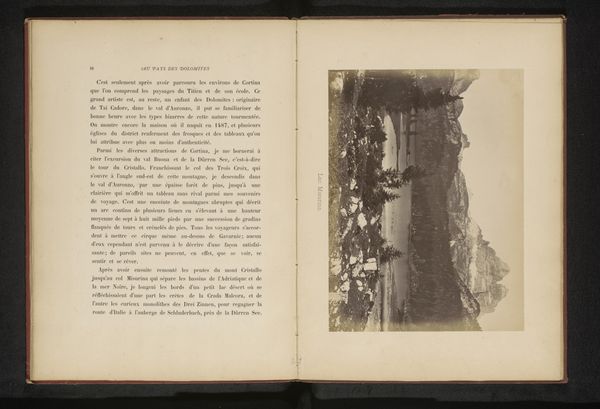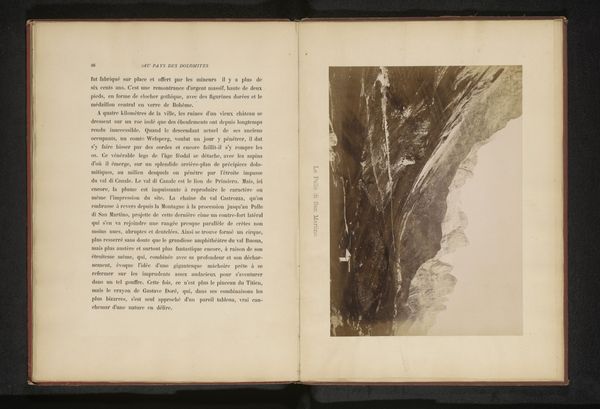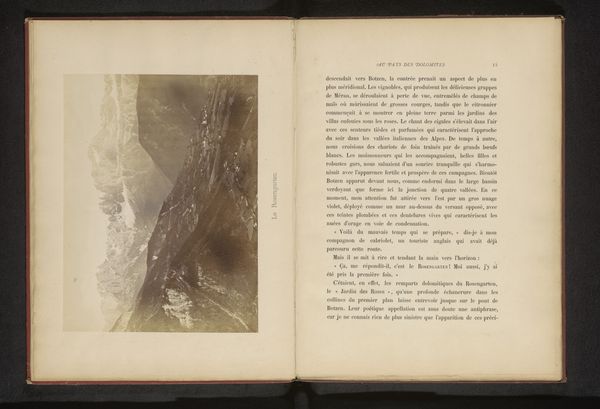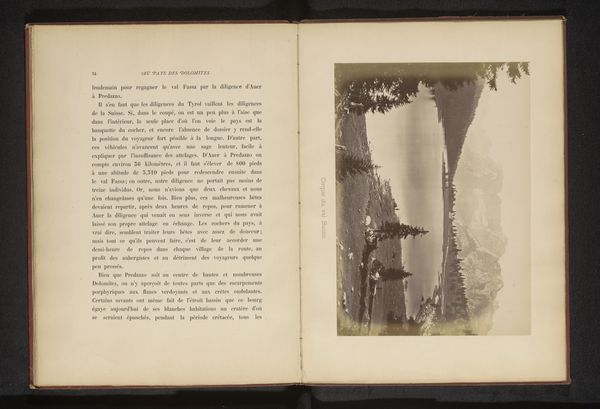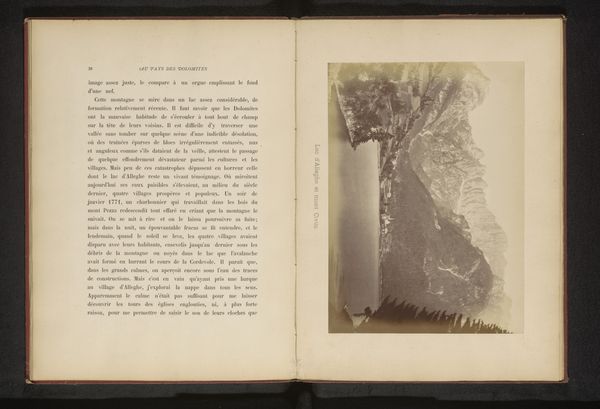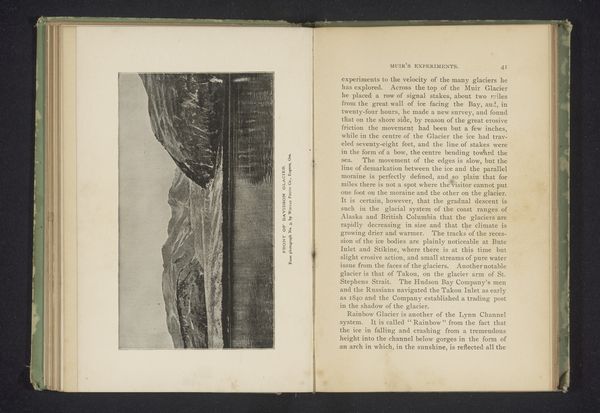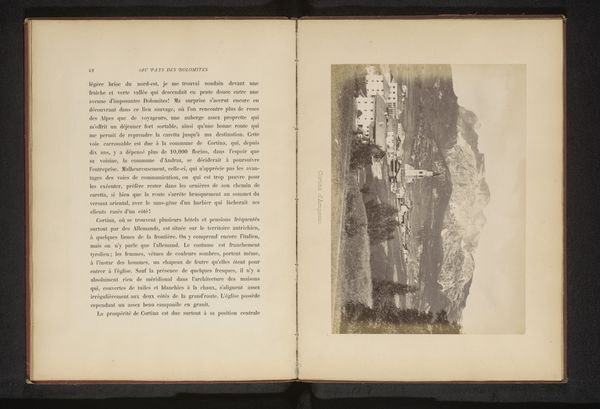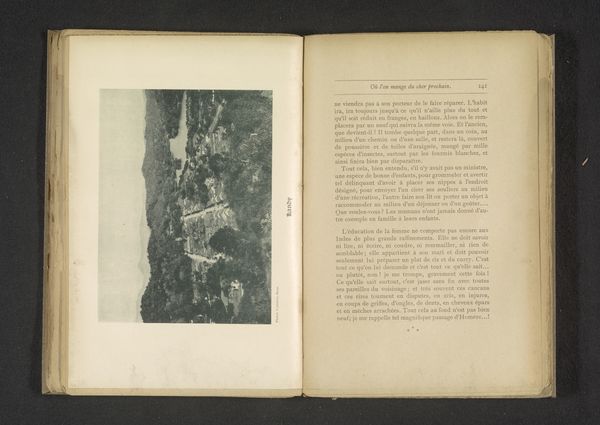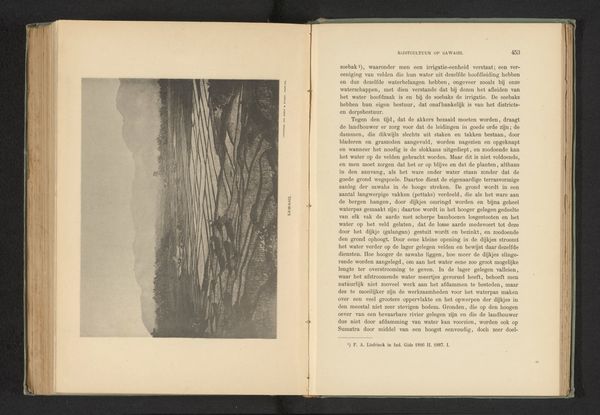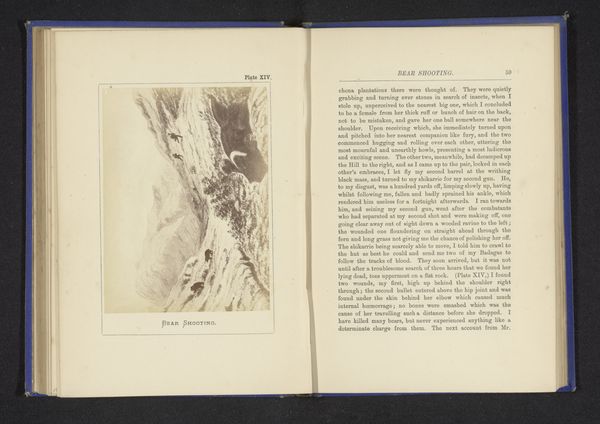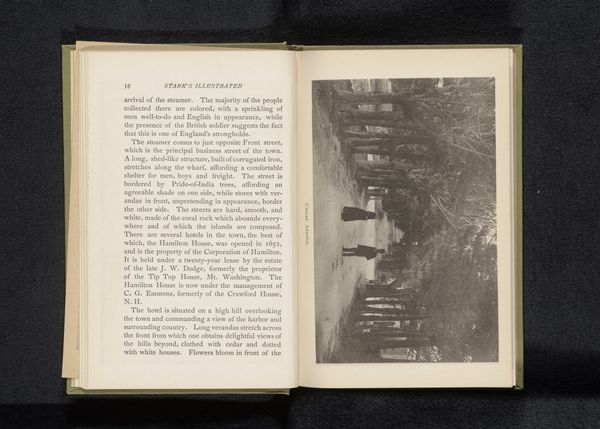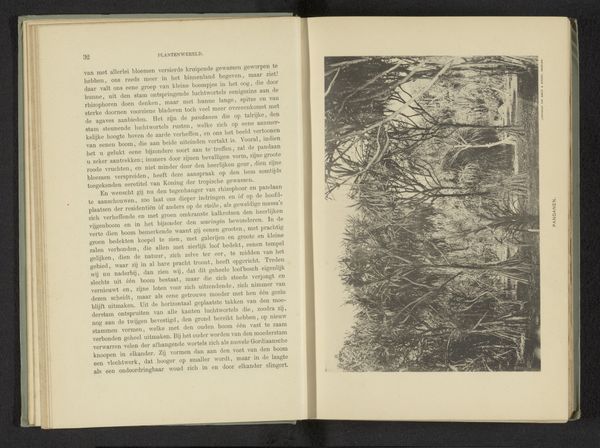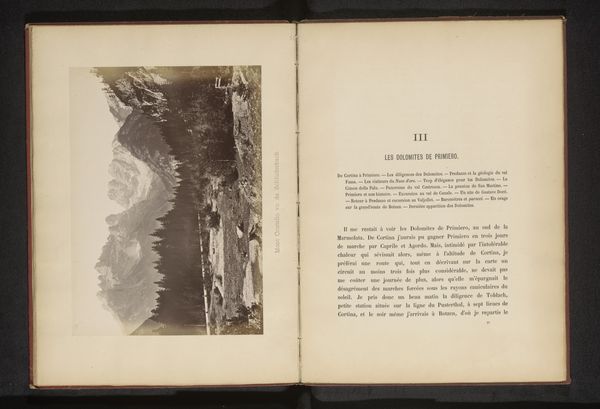
print, photography, gelatin-silver-print
# print
#
landscape
#
photography
#
mountain
#
gelatin-silver-print
Dimensions: height 192 mm, width 264 mm
Copyright: Rijks Museum: Open Domain
Curator: The view we have here is a photographic print dating from before 1878, titled "Gezicht op Caprile in de Dolomieten, Italië," or "View of Caprile in the Dolomites, Italy." The piece is credited to Eugène Goblet d'Alviella and utilizes a gelatin-silver print technique. It presents a striking mountainous scene. Editor: It’s really quite arresting—the way the village clings precariously to the mountainside. You can almost feel the steep incline. There’s something simultaneously awe-inspiring and a bit unnerving about it. Curator: The creation of images like this reveals much about how the Dolomites were being framed for wider European consumption at the time. The emerging photographic industry enabled mass circulation, crafting perceptions of the region for tourism, scientific study, and nationalistic claims. Editor: Absolutely. And who controlled that narrative? These early photographs shaped the cultural imagination, presenting an ideal, picturesque version of this Italian landscape while perhaps obscuring the daily lives and labor of the people actually living in Caprile. What would it mean to live in that image every day, to climb these rocks in the frame? Curator: That is something to contemplate. These gelatin silver prints, in particular, offered a relatively inexpensive method of reproduction compared to earlier processes. We must acknowledge that the act of photographing and then widely circulating images inherently changes our interactions with a subject like a village perched into such a mountain. Editor: The image is contained on the right half of a book, facing text in a spread of travel writing. Consider the act of taking and printing these pictures and what they reflect of broader social hierarchies. The text romanticizing the experience contrasts with the reality of living and building a town in the mountain's side. Curator: Precisely! That relationship between image and text, photography and accessibility—it opens up many ways to read the layers of the subject being considered here. Editor: Ultimately, a work such as this really makes one think about how photographic images both reflect and construct reality, specifically regarding landscapes consumed through a historical and social lens. Curator: Indeed. By studying the techniques and circulation of these early prints, we gain access to a complex picture of history, not just of the landscape, but of cultural production as a whole.
Comments
No comments
Be the first to comment and join the conversation on the ultimate creative platform.
